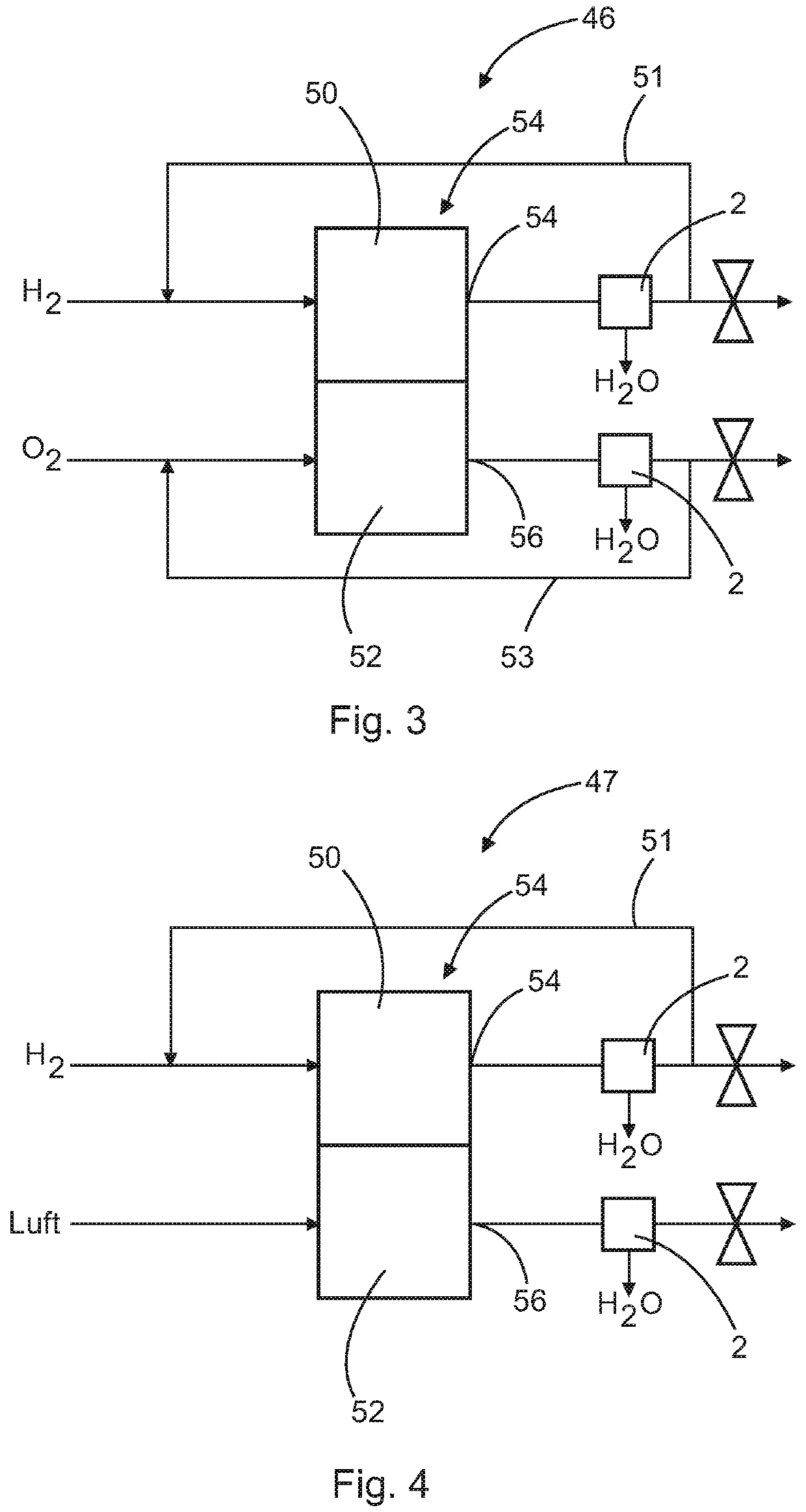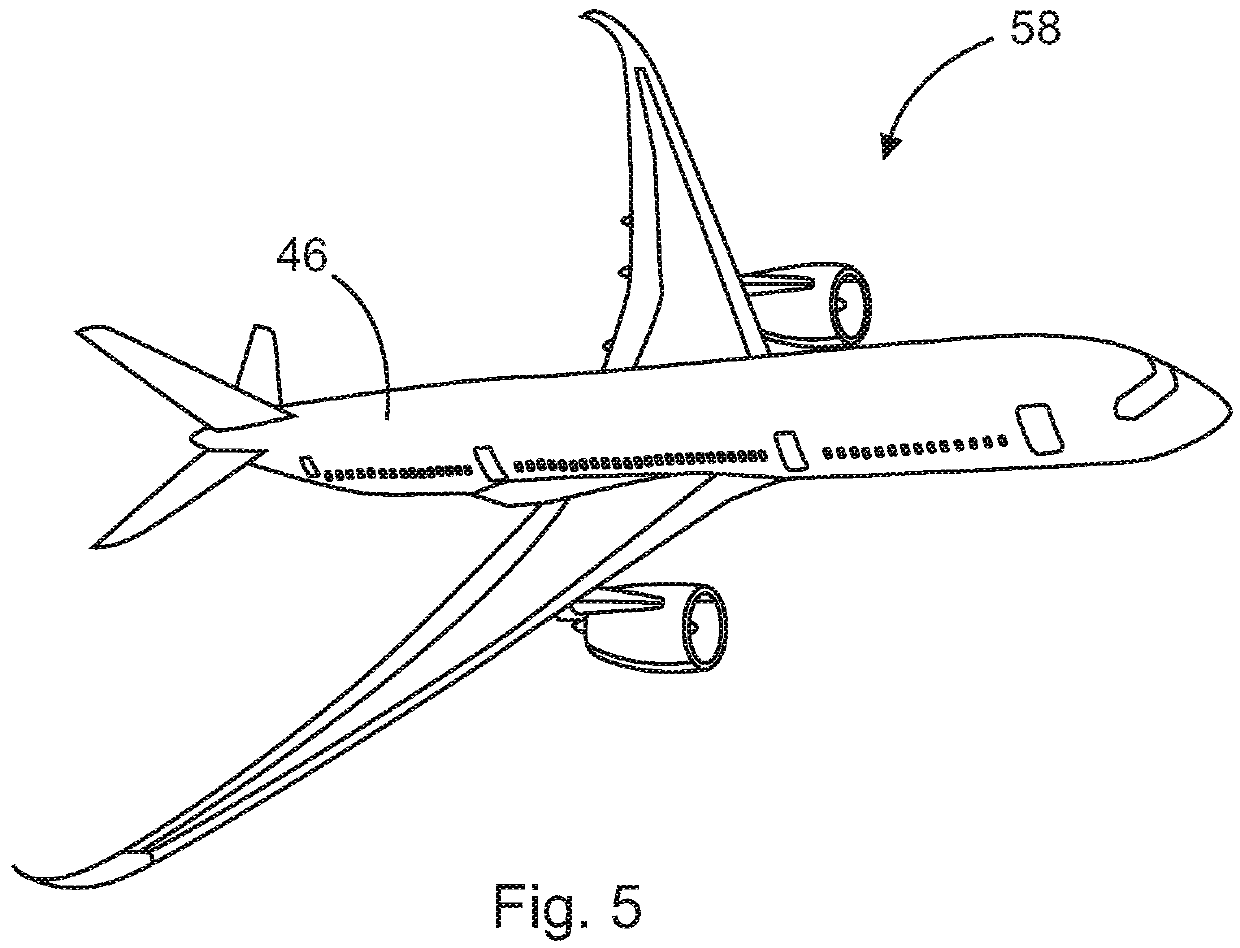Water separator for a fuel cell system
a fuel cell and water separator technology, applied in electrochemical generators, lighting and heating apparatus, transportation and packaging, etc., can solve the problems of not having a corresponding overall height and not unlimited overall spa
- Summary
- Abstract
- Description
- Claims
- Application Information
AI Technical Summary
Benefits of technology
Problems solved by technology
Method used
Image
Examples
Embodiment Construction
[0030]FIG. 1 shows a side view of a water separator 2 for a fuel cell system. The water separator 2 may be of rotationally symmetrical design, so that the representation is to be regarded as a median section. Alternatively, however, the water separator 2 may also be formed by a non-circular body and be extended vertically to the drawing plane with a uniform cross section.
[0031]The water separator 2 comprises a closed housing 4 having a gas connection 6 and a base plate 8 arranged remotely from the gas connection 6. This forms a first portion 10 and a second portion 12 lying above the latter. In the first portion 10 an inside width 14, i.e. the width of the housing 4 in the interior of the housing 4, is constant and represents a maximum compared to the second portion 12. In the second portion 12, which is situated between the first portion 10 and the gas connection 6, the inside width 14 diminishes continuously in the direction of the gas connection 6. In the exemplary embodiment sho...
PUM
| Property | Measurement | Unit |
|---|---|---|
| angle | aaaaa | aaaaa |
| angle | aaaaa | aaaaa |
| angle | aaaaa | aaaaa |
Abstract
Description
Claims
Application Information
 Login to View More
Login to View More - R&D
- Intellectual Property
- Life Sciences
- Materials
- Tech Scout
- Unparalleled Data Quality
- Higher Quality Content
- 60% Fewer Hallucinations
Browse by: Latest US Patents, China's latest patents, Technical Efficacy Thesaurus, Application Domain, Technology Topic, Popular Technical Reports.
© 2025 PatSnap. All rights reserved.Legal|Privacy policy|Modern Slavery Act Transparency Statement|Sitemap|About US| Contact US: help@patsnap.com



